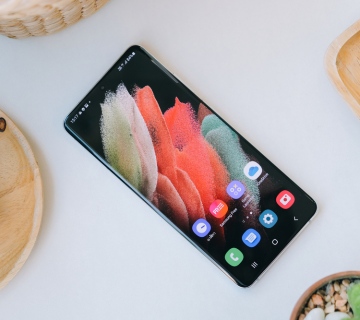There is no denying that the way we interact with different media has changed dramatically in a very short space of time. With handheld devices now becoming the de facto way many people access the internet, especially the younger age groups, delineating lines between activities are becoming ever more blurred.
The second half of the twentieth century saw the television dominate communications media, with the box in the living room being the conduit for news and entertainment content for all ages.
In just a few short years since the start of the new century things have been turned on their head. So much so that TV sets themselves now have to adapt to the new ways that users want to interact with content and delivery systems.
Doubling up
A new report commissioned by GAME.co.uk has revealed that eight in ten Britons now use a phone, tablet or laptop device to remotely interact with others whilst viewing a television programme.
This report was generated following GAME’s study of 2,000 people while promoting their new tablet range.
Whether this is simply to share their views with friends over social media, find out more information about what they are watching via online links or taking part in another activity altogether, the fact is that double or even triple screening is becoming the norm.
Chief Digital Officer at GAME Retail Ltd Ian Chambers commented:
“Digital technology is advancing at an incredible pace and we’re constantly developing all our channels to make sure we’re delivering for our customers. The evolving digital environment brings together so many aspects of life: gaming, entertainment and day-to-day activities like doing the shopping. It’s no surprise this study highlights how commonplace triple screening is today.”
Multi-tasking
With online connectivity now at faster speeds than ever in the home, the problems of bottlenecked data that were so discouraging in the days of dial-up no longer apply. This means that not only can several devices be downloading and uploading data at the same time but different members of a household can be in various rooms and all sharing enough bandwidth to multi-task at the same time.
“We’re seeing rapidly changing consumer behaviour and the digital evolution is a huge part of that. It’s now the norm for people to engage with multiple devices in front of the TV – whether that’s watching your favourite programme or playing the latest games. Consumers have the world at their fingertips and we’re seeing growing levels of access to www.game.co.uk from mobiles and devices – and a lot of that comes during peak TV hours,” Chambers explained.
Devices
The relatively recent introduction of the tablet form factor looks like it might be playing a significant part in the double screening process.
Although mobile internet has been around for sometime via laptops and more recently smartphones, a tablet is a perfect device for casual domestic use as it has the advantage of a larger screen size over phones and a lighter and more easily handled size and shape that all but the lightest laptops.
However, each new generation of games consoles is also making the concept of ‘convergence’ less of an idea and more of a reality.
“At its heart, multi-screening is about making every experience richer – and that’s happening with gaming right now as we move into the next generation of consoles. Boundaries are being pushed as second screen apps are being used to add extra depth to the gaming experience and the Call of Duty Elite app is a great example – it brings a whole new element to Call of Duty: Ghosts for the gamer,” said Chambers.

View in Full Resolution


